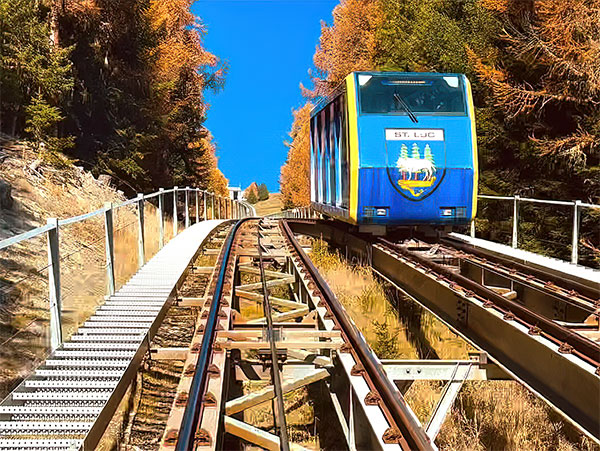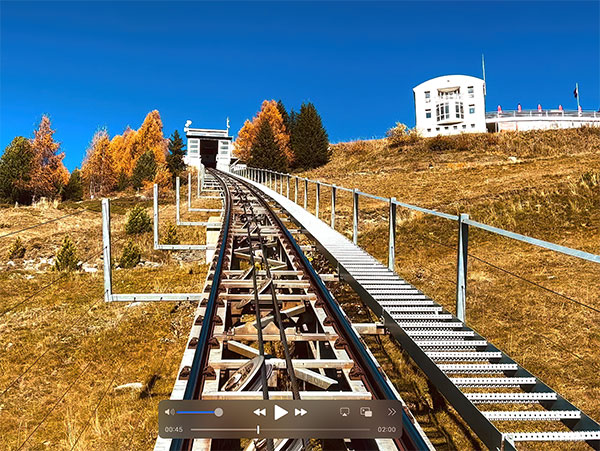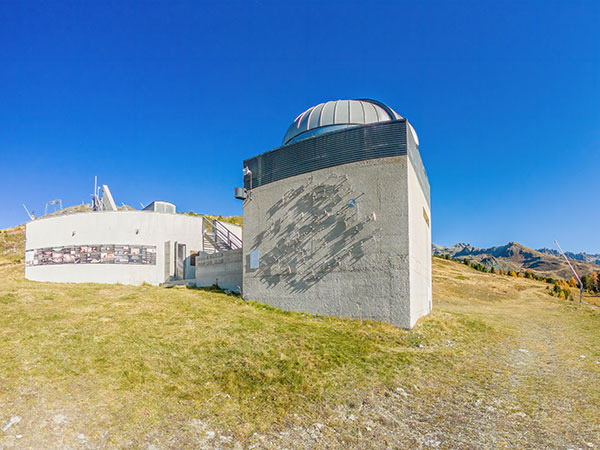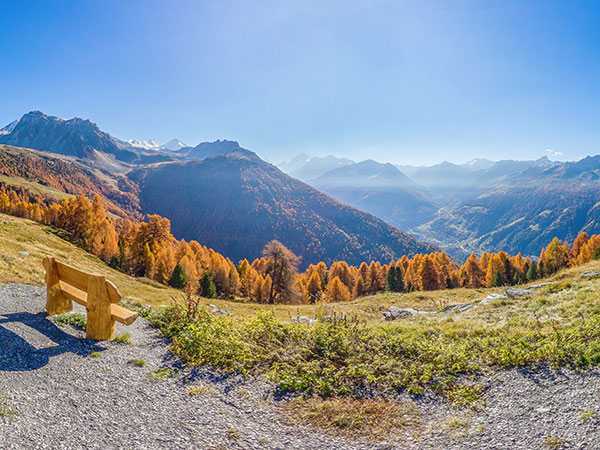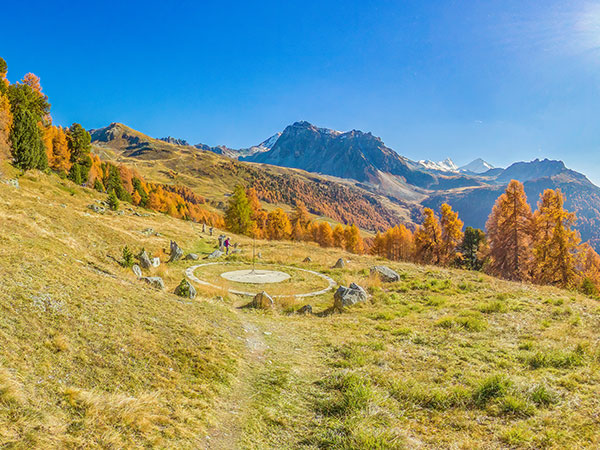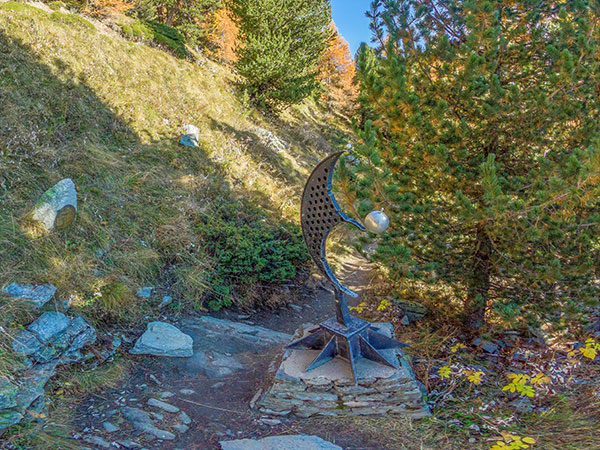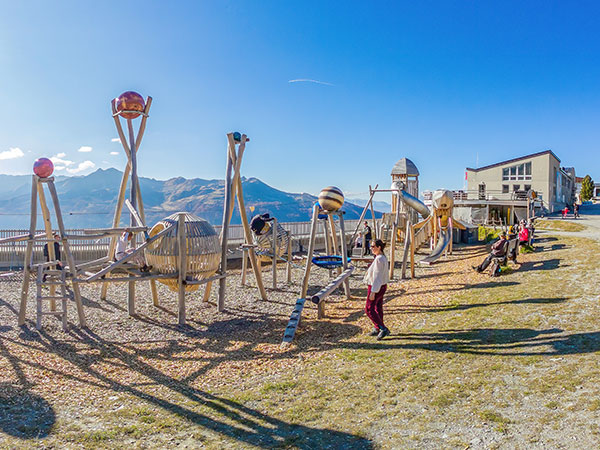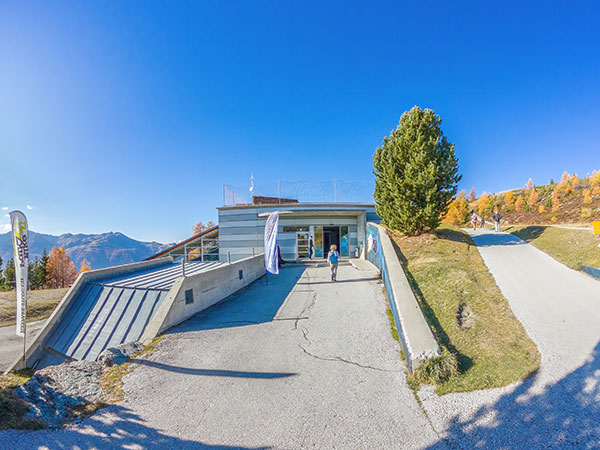Situated at an altitude of 2184m above Saint-Luc, the ‘Village of the Stars’, the Tignousa alpine pasture is part of the Chandolin-St-Luc ski area, but it is also a paradise for astronomy enthusiasts, with a well-equipped observatory and a planet trail that fascinates young and old alike.
Getting there is quite an adventure, but well worth it! To avoid a cold sweat, take public transport - the roads in the Val d'Anniviers are formidable enough to dissuade you from enjoying the scenery while driving...
The first postal bus takes you from Sierre to Vissoie, then you take a second bus that climbs to St-Luc. Get off at the ‘Bella Tola’ stop and walk through the village to the bottom station of the funicular. It's a lovely 650m walk through the old village.
The funicular takes you up to Tignousa in just 3 minutes, departing every 30 minutes. Next to the top station, you'll find a restaurant and a children's playground, with an astronomy theme of course!
Further afield, the François-Xavier Bagnoud Observatory organises astronomical evenings and solar observations. It's very small, but its state-of-the-art equipment has enabled it, for example, to determine the nature of the exoplanet Gliese 436b!
Even further on begins the Path of the Planets, where every metre covered represents 1 million kilometres. Starting at the Sun, you pass from one planet to the next along a path that offers grandiose views. At each planet, visual and audio aids present the celestial body in detail, in a way that's both educational and fun.
It makes you realise just how vast our solar system really is. While the first planets, from Mercury to Mars, follow each other fairly quickly along the path, you'll have to cover 4.5km to reach Neptune!
The trail continues even further, to Halley's Comet and the dwarf planet Pluto, and it takes between 3 and 4 hours to walk there and back! But we stopped at the Earth and the Moon to bring you magnificent panoramas without getting lost in the depths of space...
Useful links
Swiss Canton of
Valais -
Wikipedia


